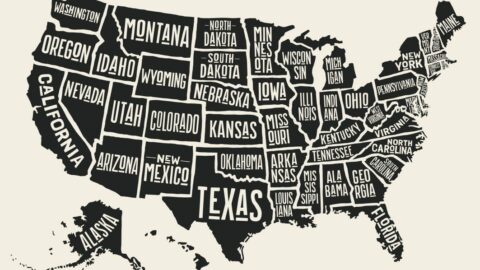If you want to search Cost Curve back issues or link to anything you read here, the web links and archive are online at costcurve.beehiiv.com. You can subscribe there, too.
I can’t imagine anyone is surprised, but Johnson & Johnson and Bristol-Myers Squibb both lost their lawsuits challenging the constitutionality of the IRA. The industry’s record is now 0 for 4, and this will probably cast a pall over the Novo Nordisk and Novartis suits, which are being overseen by the same judge.
The key part of the opinion holds that IRA price controls aren’t an unconstitutional “taking,” because companies have a simple out if they don’t accept the government’s take-it-or-leave-it price: they can pull their med out of government programs. This is entirely a voluntary program, or so the ruling held.
The industry suits have pushed back on this because, well, not selling to Medicare is not a viable commercial option, and this is where a lot of the more colorful pushback has originated (e.g. “gun to your head,” “I guess you negotiate with a mugger when they show up,” etc.) And while this is clearly true as a matter of fact, it hasn’t flown in the courtroom.
While a lot of the coverage suggested that this will dent the possibility that the suits will find their way to the Supreme Court, that’s probably a premature conclusion. That’s going to depend on how the appeals courts treat all of this, and I don’t have a bead on how any of that will go.
That drama kicks off in earnest tomorrow, when PhRMA and its partners got before the Fifth Circuit in its appeals case, per Bloomberg Law, which does a good job. The body language of those jurists is worth watching. AstraZeneca, too, has filed an appeal in its case.
But the fact that we have three or four judges, from a range of backgrounds and ideologies, who have all been skeptical of the central pharma arguments suggests that this is a longer shot than might have been assumed six months ago.
California is going to make cheap naloxone — the opioid-reversal drug — broadly available to its citizens. This is a public health triumph, and it’s going to save countless lives. It’s a smart and timely policy.
The move is not, however, some sort of brilliant play to demonstrate that governments can magically deliver low-cost medicines to populations with no tradeoff, which is how it is being spun.
California is buying tens of millions of dollars of the newly approved naloxone generic. California isn’t doing any manufacturing, and the lower price that it is paying is coming not from any usual application of state power. It’s just buying a generic drug, at what I assume are market rates (or close to market rates) from Amneal, the company that makes the generic version.
(The AP coverage of the story mentioned that California’s naloxone will, maybe this summer, “move to the CalRx label,” pending FDA approval. It sounds like that’s just a white-labeled version of the Amneal product.)
The state is working a similar (if higher-profile) strategy around insulin, where it has abandoned its original aspirations of making the stuff and will instead buy the biosimilar version made by Civica at what sounds like pretty close to market rates. (Squint at the Sanofi chart on page 12 of their Pricing Principles report, and it sure looks like Sanofi is netting less than $30 a month.)
That doesn’t mean that the California programs are bad or failures or not worthwhile. On the contrary, it seems like a great way to ensure access. But let’s all be honest: these efforts are not what they’re frequently presented as, which is the use of state power to drive down drug prices.
Indeed, if the California experience teaches us anything, it’s that the real power and genius of the U.S. pharmaceutical system is the ability to get generic drugs to market. That market has gotten a lot tougher lately, and we’d probably all be better off if a little more attention went to solving that issue.
David Wainer over at the WSJ does a great job of explaining why CVS is launching a “store brand” Humira. RELATED: One twist I didn’t pick up on until I read this Endpoints story about a similar effort by Cigna/Evernorth/Express Scripts: Cigna is not favoring its biosimilar over real-deal Humira, which means that Humira is probably still in the driver’s seat there.
I was going to ignore the Médecins Sans Frontières decision to release details on how much their tuberculosis cost (and their effort to pressure drugmakers into being similarly transparent) because it just had the feeling of a stunt. But then I saw that the MSF folks were grounding their push around, “… the unsubstantiated yet dominant narrative that high prices are needed to recoup high R&D costs.” So this is a semi-regular reminder that the pharma industry isn’t making that argument much anymore.
This PatientView survey suggests that patient advocacy groups generally have a good view of pharma, though those polled generally have pre-existing relationships with industry. Still, the groups are pretty nervous about industry policies around pricing, access, and patient involvement in R&D.
The Washington Post has a long piece on UnitedHealth Group, pegged to the idea that members of Congress might be interested in addressing the size of the company. I mean, it’s probably a good idea, but I’ll believe it when I see it.
If this email was forwarded to you, and you’d like to become a reader, click here to see back issues of Cost Curve and subscribe to the newsletter.





